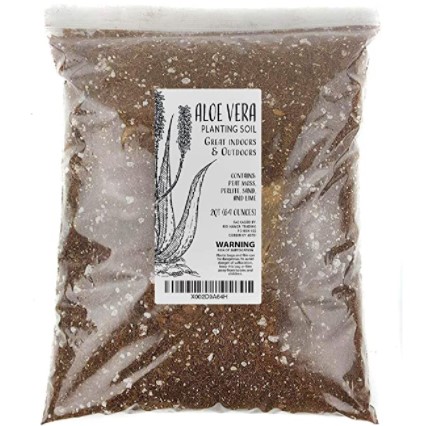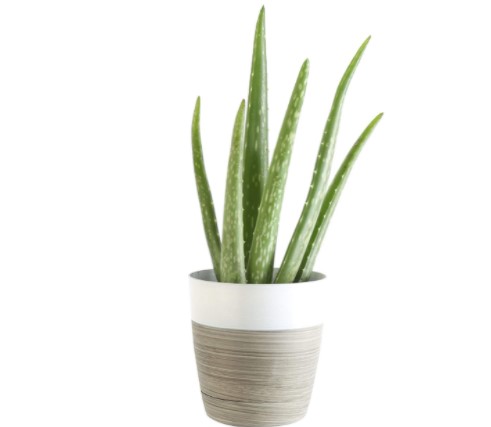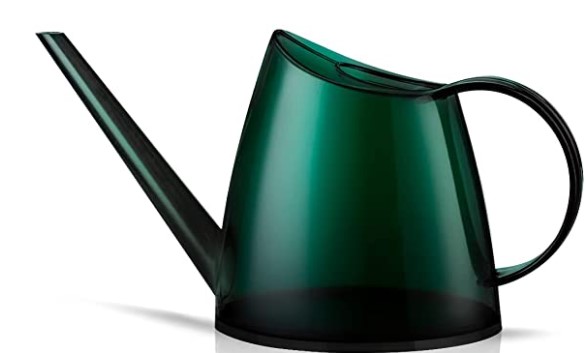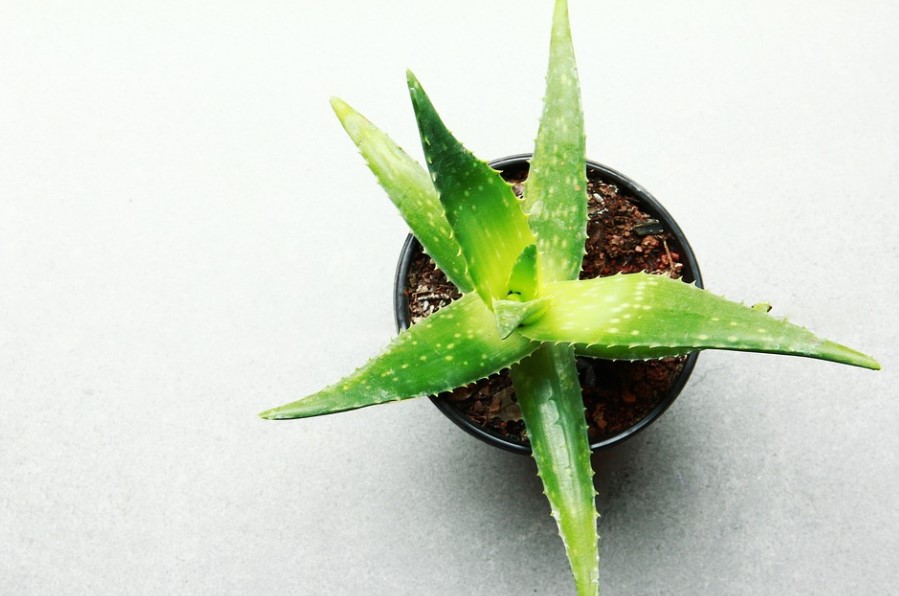Are you wishing to add a new plant to your garden or perhaps your home? Then you may want to consider an Aloe Vera plant. But before getting yourself one, or if perhaps you already have one, you should be aware of the care and attention your plant requires, which includes of course among other things, knowing how often do you water Aloe vera.
The Aloe Vera plant, which is a Spike Plant, helps in absorbing large quantities of carbon dioxide and emitting equal amounts of oxygen, thus purifying the air and giving you a fresh nontoxic environment to breathe. They have rich properties of curing burns, inflammation, skin irritation, and even curing digestive problems and constipation.
As you can see, keeping a small aloe vera plant in your home can bring you a number of health benefits. If you are new to Aloe Vera plants, you need to make sure you provide the specific care your plant needs. In the case that you haven’t been successful with your plant in the past, knowing when and how you should water them, may be the reason. Keep reading and learn about, how often do you water Aloe Vera.
How Often Do You Water Aloe Vera FAQ’s
Is Aloe Vera a succuclent?
Aloe vera is a succulent plant species of the genus Aloe. The plant is stemless or very short-stemmed with thick, greenish, fleshy leaves that fan out from the plant’s central stem. The margin of the leaf is serrated with small teeth.
Aloe plants are succulents that are mostly considered drought-tolerant plants. However, they do need water, just like any other plant. Aloe succulents are healthier and have the best appearance when they are kept lightly moist.
How do I know if my aloe plant needs water?
You can tell if your Aloe vera plant needs to be watered by pressing your index finger a few inches down into the soil. If the soil is dry, your plant needs water. Aloe vera plants are succulents and do not need to be watered often. Overwatering can kill your plant.
What does an overwatered aloe plant look like?
Your aloe’s leaves should be plump, firm, and upright, with an even green color. You’ll know your aloe plant is being overwatered when the leaves develop what are called water-soaked spots that look soggy and soft. It’s almost as though the entire leaf becomes saturated with water, then it turns to mush.
Do aloe plants need direct sunlight?
It is critical that you place your aloe in a window where it will receive a minimum of six hours of sunlight per day. Without extended, direct light, your succulent will begin to stretch and lose its attractive, compact form. It may topple over as the stem grows weak.
How Often Do You Water Aloe Vera plants inside?
To discourage rot, allow the soil to dry at least 1 to 2 inches deep between waterings. Don’t let your plant sit in water. Water about every 3 weeks and even more sparingly during the winter.
How often should I water my potted aloe plant?
In general, terms, plan to water your aloe plant about every 2-3 weeks in the spring and summer and even more sparingly during the fall and winter. One rule of thumb for fall and winter watering is to roughly double the amount of time between waterings (as compared to your summer watering schedule).
How do you bring aloe vera back to life?
Cutting back encourages more aloe leaves to grow and the plant can recover. For aloes that have been in the shade for too long, the leaves are too weakened to stand back up again and no amount of sunlight can fix it. The only way to revive it is to take cuttings from the healthiest-looking leaves for propagation.
Where is the best place to put an aloe vera plant?
Place aloe plants near a sunny window where they receive plenty of indirect sunlight, such as a few feet from a south- or west-facing window. Too much bright, direct sunlight can brown aloe’s leaves. Rotate the pot once or twice a week so that all sides of the aloe receive equal lighting.
How to plant Aloe Vera?
- Get your pot ready. After giving the new pot a quick rinse and letting it dry thoroughly, place a small piece of screen over the drainage hole, in order to keep the soil from falling out.
- Prepare your plant. Remove the aloe vera plant from its current pot and brush away any excess dirt from the roots, being careful not to damage the roots.
- Planting time. Fill the pot about a third of the way with a well-draining potting mix, then place your plant in the soil. Continue filling in the soil around the plant, bearing in mind that you should leave at least 3/4 of an inch of space between the top of the soil and the rim of the pot. The bottom leaves of the aloe plant should rest just above the soil, too. Do not water after planting.
- Give it time. After you’ve placed your aloe in its new pot, don’t water it for at least a week. This will decrease the chance of inducing rot and give the plant time to put out new roots. Until the plant seems to be rooted and happy, keep it in a warm place that receives bright but indirect light.
Aloe Vera Soil Blend
This soil blend is specially formulated for use with aloe vera plants, and although the soil can be used with other succulents, we find this blend works best for aloe, either repotting as growth demands or moving from a less ideal soil you find with store-bought plants.
A special blend of peat, perlite, sand, and lime ensures that the right environment exists for your aloe, a gritty media that drains fast and reduces the risk of root rot.
With the added sand and lime in our aloe soil, you can ensure that where standard potting mixes may fail to specifically address your aloes requirements, this soil mix will provide both the PH and the drainage you will need to have aloe growing success.

Features:
- Hand blended
- All-natural
How to care for Aloe Vera?
- Lighting: Place in bright, indirect sunlight or artificial light. A western or southern window is ideal. Aloe that is kept in low light often grows leggy.
- Temperature: Aloe vera does best in temperatures between 55 and 80°F (13 and 27°C). The temperatures of most homes and apartments are ideal. From May to September, you can bring your plant outdoors without any problems, but do bring it back inside in the evening if nights are cold.
- Fertilizing: Fertilize sparingly (no more than once a month), and only in the spring and summer with a balanced houseplant formula mixed at 1/2 strength.
- Repotting: Repot when root bound, following the instructions given.
Aloe Vera Live Indoor Plant Fresh
Houseplants have the magical quality of making any space more inviting, and this makes them ideal décor items for homes and offices.
Grow Aloe Vera in bright, direct sunlight for the best growth and enjoyment. Water Aloe Vera with approximately 1/2 cup of water about once every 2 weeks. Adjust as needed for your environment.
Air-purifying. Plants help filter harmful pollutants, such as benzene and formaldehyde, from indoor air.

Features:
- Spring to Summer
- Little To No Watering
How Often Do You Water Aloe Vera
- Aloe vera irrigation should be regular enough to prevent shriveling and encourage growth but not so frequently you drown the plant.
- Generally spring and summer into early fall, these succulents need to be kept moderately moist in the growing season. However, in winter the watering schedule should be halved.
- On average, watering an aloe once per week is enough, but if plants are exposed to extreme sunlight and heat, a touch test is necessary.
- This is the easiest way to tell if the soil is too dry. Simply insert your finger into the soil up to the second knuckle. If it is dry, water the plant.
- Aloe vera irrigation should be deep and infrequent. Watering an aloe deeply also allows any built-up salts to leach from the soil. Succulents can be sensitive to the minerals and chemicals in municipal water supplies. If your aloe seems peaky, use filtered or distilled water when irrigating.
- Add a diluted liquid fertilizer once per month to the water but only during the growing season. If your plant has been overwatered, pull it from the soil and lay it out to dry.
- The roots need to be checked for any signs of fungal disease and trimmed if any is discovered. Replant in fresh dry soil in a few days and do not water for a week.
- These are practically foolproof plants that can survive most errors in irrigation.
WhaleLife Indoor Watering Can
The pot body has a large water storage capacity of 1.4l, which can reduce the trouble of frequent irrigation and lengthen the spout to make it easier to water.
Thickened PS resin pot body, firm and strong, transparent pot body design, the water level is clearly visible, easy to control the water flow.

Features:
- 1.4 Liters
- Plastic
- Easily Use
Additional Tips on How Often to Water Basil
- Aloes can withstand periods of drought if established but young plants need more frequent irrigation to help them establish root systems and can be severely damaged by overly dry conditions.
- Water aloe vera plants deeply, but infrequently. In other words, the soil should feel moist after watering but should be allowed to dry out to some extent before you water again. If the soil stays overly wet, the plant’s roots can rot.
- To ensure that you’re not overwatering your plant, allow the top third of potting soil to dry out between waterings.
- If your plant is kept in 6 inches of potting soil, allow the top 2 inches to dry out before watering again.
- When watering, some excess water may run out the bottom of the pot. Let the pot sit in this water so that the soil absorbs as much as possible. Wait 10-15 minutes, then dump any remaining water. Now that you know about watering basil; do you know How Often To Water Basil?



